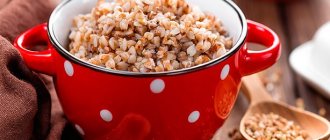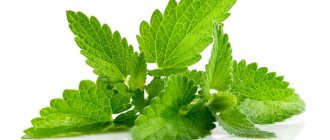Diabetes mellitus is a chronic disease that is accompanied by an increase in blood glucose due to an absolute or relative deficiency of insulin, as a result of which the entire metabolic process in the body suffers and damage to almost all organs and systems progresses. The most important task for a patient with a confirmed diagnosis of diabetes is to follow a special diet, which involves minimizing the consumption of simple, easily digestible carbohydrates, especially glucose, while increasing the amount of complex carbohydrates in the diet.
Many people find it difficult to adapt to a new lifestyle and diet, because there are many dietary restrictions for diabetes. Patients who take a responsible approach to organizing their diet naturally have questions about different food products and the possibility of consuming them for this disease. For example, is pumpkin okay for diabetes? How to cook and in what quantities to eat this sunny vegetable? This article is devoted to precisely such questions.
Glycemic index of pumpkin
The glycemic index is a coefficient that shows how much a food affects the concentration of sugar in the blood. For all products, it is compared with the glycemic index of pure glucose, which is 100, this is the maximum possible indicator.
Pumpkin has a glycemic index of 75 - this is a high indicator, which means that it should be consumed in very small quantities, no more than once a week.
This indicator practically does not depend on culinary processing, although pumpkin is eaten boiled, baked, and sometimes even fried. The glycemic index is usually indicated for boiled or baked pumpkin, since it is not eaten raw.
Why the fuss?
I have already talked about fast and slow carbohydrates. Their ratio determines how easily our body can use this or that food as a source of energy.
GI - what is it? Let me explain: it does not show the amount of sugar in food, but how quickly this sugar can decompose into glucose and end up in the blood. The product may contain very few carbohydrates, but at the same time all of them are instantly broken down into their own form.
The index discovered by Jenkins primarily indicates whether a particular food can be consumed by diabetics. Therefore, the GI is paired with the Insulin Index (which, to be honest, has been studied even less).
What about excess weight? Everything is simple here.
A sharp rise in sugar levels always causes an increased need for insulin. The pancreas quickly fabricates it, and with a reserve. And it is responsible for excess fat deposits.
Useful properties of pumpkin
Pumpkin contains a wide variety of vitamins - A, C, group B, PP and others. They have a variety of positive effects on the body.
In addition, it contains microelements:
- Iron, involved in hematopoiesis and other important processes in the body;
- Magnesium, necessary to maintain the functioning of nervous tissue and normalize heart rhythm;
- Potassium, necessary to maintain acid-base balance, heart rhythm, kidney and pancreas function;
- Calcium, which strengthens bones, is involved in muscle contraction.
These substances are contained in pumpkin in large quantities, sometimes even exceeding the daily human requirement.
- Low fat content, mostly polyunsaturated, which does not increase blood cholesterol, as well as protein, the composition of which is quite close to complete.
- Additionally, the high water content makes pumpkin low in calories. Thus, this product becomes a tasty and healthy addition to food.
However, the high glycemic index of baked or otherwise prepared pumpkin is a consequence of its high glucose content.
GI of some vegetables
Vegetables are not at all unique in their “extremely low glycemic index.” Of course, compared to cereals and bread, they are healthier. But even in their friendly company you can find a huge difference. I'll give you a few examples.
So, low GI vegetables:
- cabbage - from 15 to 30;
- green beans - 30;
- lentils - from 20 to 25;
- fresh carrots - 30;
- onion - from 10 to 15;
- cucumbers - 20;
- tomatoes - 10;
- greens (parsley, dill) - 5;
- eggplants - 10;
- sweet pepper - 15;
- lettuce - 10.
- turnip - 15;
- radish - 15.
With high:
- boiled potatoes - 65-70;
- boiled carrots - 80;
- beets - raw 70, boiled (due to the release of some of the saccharides into the water) - 65;
- fresh peas - 50, dry - 25;
- pea soup, porridge - 60;
- white beans - 40;
- rutabaga - 99;
- pumpkin - 75;
- zucchini - 75;
- watermelon - 70.
No need to rub your hands and grab calculators. Everything is a little more complicated than it seems at first glance.
Friends! I, Andrey Eroshkin, will conduct mega interesting webinars for you, sign up and watch!
Topics of upcoming webinars:
- How to lose weight without willpower and prevent the weight from coming back?
- How to become healthy again without pills, the natural way?
- Where do kidney stones come from and what can be done to prevent them from appearing again?
- How to stop visiting gynecologists, give birth to a healthy child and not grow old at 40?
SIGN UP FOR THE WEBINAR
Pumpkin juice - benefits and harms
Another product that cannot be ignored when talking about the beneficial properties of pumpkin is pumpkin juice. This product is quite rarely found on store shelves, however, fans of natural juices often recommend drinking it.
Pumpkin juice has a variety of effects:
- It strengthens the immune system.
- Useful for viral diseases.
- Has a detoxifying effect.
- Reduces the severity of toxicosis in pregnant women.
- Another effect of pumpkin juice is that it is a laxative and can be consumed for constipation, but should not be consumed for diarrhea. But you should remember that the juice is made from sweet varieties of the vegetable, so its glycemic index is higher than the glycemic index of raw pumpkin.
- If you have diabetes, you should drink pumpkin juice no more than once a week or two.
Method of detection
Diabetes analysis is carried out taking into account the following conditions:
- The collection should be carried out throughout the day, 6-8 times.
- All results are recorded sequentially.
- Patients not on hormone replacement therapy should undergo testing once a month.
- The norm can be established at an individual appointment with an endocrinologist.
In order for the result to be informative, it is necessary to use the same glucometer throughout one study.
Daily measurement of carbohydrates in urine is necessary for patients with diabetes. This test is used to study the appropriateness of the therapy used. The following activities should be carried out for it:
- Collect the first urine sample between 8 am and 4 pm.
- The second portion is collected after 4 days before midnight.
- The night portion is considered the third.
Each jar is marked with the time of collection and the amount of physiological fluid obtained as a result of collection. Only 200 ml from each container, with the necessary inscriptions, is sent to the laboratory.
The doctor prescribes a large dose of the drug precisely for the period when maximum glucosuria is recorded. If therapy is successful, complete aglucosuria should be observed.
Pumpkin - contraindications
Pumpkin reduces the acidity of gastric juice due to potassium and magnesium. This may be useful in hyperacid conditions or to reduce appetite. For diseases with low acidity of gastric juice, such a property of pumpkin as a decrease in acidity will only bring harm.
In addition, due to the large amount of fiber, this product stimulates the activity of the intestines, which, when functioning normally, helps prevent constipation.
With diarrhea, it causes increased symptoms, gas formation and abdominal pain. Many patients report pain and rumbling in the stomach when eating pumpkin for the first time.
What can you eat?
A diabetic friend of mine preferred to eat meat. It has a low GI because there are almost no carbohydrates. Of course, it can also be “spoilt”: fry it in vegetable oil, for example. The lady, by the way, argued that it is healthiest to eat meat raw. Maybe someone will follow her example for the sake of a low GI?
Ideally, everyone can sit down and figure out how much protein they need, count the essential amino acids, then select foods high in slow carbohydrates, figure out where to get the right amount of unsaturated fatty acids, high
Pumpkin - calories
The undoubted advantage of pumpkin is its low calorie content. It is only 22 kcal/100g.
Therefore, this product will be very helpful in normalizing weight, as well as in diabetes, when it is necessary to take into account the number of calories eaten and expended.
Pumpkin, despite its high glycemic index when boiled or otherwise prepared, can be included in soups, vegetable side dishes, and other dishes that people with diabetes can sometimes treat themselves to.
Test features
It is necessary to follow some rules in order to collect blood correctly. If the patient fills out his glycemic profile every day, then over time the skills become automatic, and he no longer needs to be reminded of these rules.
1. Before the procedure, you need to wash your hands thoroughly; it is not recommended to use aromatic soap.
2. Alcohol is never used to disinfect a finger before pricking. This can be done after the procedure. Scarifiers are sterile and are in individual packages.
3. Before the injection, it is recommended to massage the fingertip a little until it turns red. Under no circumstances should you squeeze out the blood yourself.
4. To improve blood circulation, before the injection, warm your palm by holding it in warm water or over a battery radiator.
5. Do not apply any substances to your fingers before drawing blood.
These are five simple rules that, if followed, will help you avoid mistakes when conducting research.
Who needs it?
Knowing the GI is primarily useful for those who are at risk of type 2 diabetes: people who lead a sedentary lifestyle and are obese. But for them, the main thing is to maintain a balance of proteins, fats and carbohydrates, and not to count indices.
A frivolous statement? Okay, after the watermelon, let's look at the example I promised above.
Rutabaga GI is 99. What does this mean? That rutabaga carbohydrates are easily and quickly broken down into glucose and enter the blood. But 100 g of rutabaga contains only 7.5 grams of carbohydrates, most of which are insoluble fiber. Conclusion: in order for your sugar level to jump to serious levels, you need to eat at least several kilograms of this root vegetable at a time. Before then, your stomach will fail.
The GI of dark chocolate is small - just over 20. It contains sugar, but also cocoa powder, which contains a sufficient amount of insoluble dietary fiber. Milk chocolate contains less cocoa, which is why the indicator is higher - about 70.
It follows from this that dark chocolate is not suitable as an energy boost, but milk chocolate is. But despite the low GI, I will not suggest eating bitter every day instead of a side dish; it is inferior in terms of protein and contains trans fats.
Misconceptions
Sweet-tasting fruits and vegetables do not always have a high GI, and savory ones do not always have a low GI.
By the sensation of sweetness on our tongue, it is impossible to determine what sugars a product contains and what its GI is. Some easily broken down polysaccharides taste salty, while others are simply tasteless. It all depends on the type of carbohydrates and how they are processed. Raw potatoes contain starch in a form in which we cannot digest it, and have a low GI, and boiled or fried - very high, more than 50. The same - carrots, raw and boiled - 30 and 80. Both - sweetish taste.
What does all this mean? Only about what we, healthy people leading an active lifestyle, need. Oh, yes, I forgot that not everyone has decided to change their life for the better. Okay, I'll say it differently. Everything can be learned by comparison, and if you check the GI of different “healthy and harmful” products, it will become clear that you can’t rely on whether it’s a fruit or a vegetable, or on taste or color. Judge for yourself:
- The GI of sweet grapes is about 40, and that of green peas is 45;
- strawberries - 40, and everyone's favorite sprouted wheat grains - 60;
- muesli (those who want to lose weight love them so much) - 80, and cake with cream - 75 (not much difference, right?);
- the indicator for sweet raspberries is 30, and for completely unsweetened parsnips is 97;
- sweet apricots - 20, and red currants (a rather sour berry) - 30.











